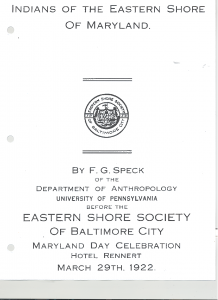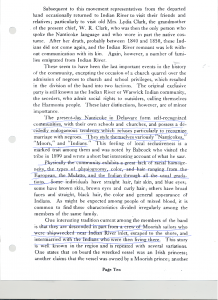Monthly Archives: July 2015
How the Black Carib Indians Became White – presented by IronLion
Real History:
Agostino Brunias (1728 – 1796): A Leeward Islands Carib family outside a Hut

The original painting is shown above.
The Moors of Eastern Europe: Balkan Blacks II (African Genetic Footprints in Europe)
The Moors of Eastern Europe: Balkan Blacks I

The name Škofja Loka derives from the medieval times and it was originally named Loka, which means wet, grassy area near water. However, at that time there were many Lokas in Slovenia, and there had already existed a rural settlement named Loka (today’s Stara Loka) not very far from the town, therefore later on Škofja was added to the name Loka.
Genetics of Skin Colour: SLC24A5 is the “White” Gene
Skin color gene
By Physicist Lubos Motl
A remarkably high number of people have suggested that James Watson was referring to a field that is outside his field of expertise – or even unrelated to DNA. I don’t know how many of those people actually believe that race is not encoded in DNA but the number of people who have verbally contradicted basics of elementary school biology in this fashion is incredibly high anyway. Color of plants and color of other things are the first examples that are discussed whenever genetics is taught at school.
How the United States of America created the current Nigerian President Muhammadu Buhari – A Short Biography
By Garba Shehu
How God, US made me — Buhari

Shortly after the August 1983 military coup that brought a 40-year-old Muhammadu Buhari to power, he received a phone call from a top personnel in the United States Army. General Smith was the Commandant of the U.S. War College from which Buhari graduated in 1980. The school’s 1979 set had graduated its first Nigerian, General Wushishi, who was the Chief of Defence in the just ousted Shehu government.
The Moors of Colchis/Armenia
Genetic legacy of the Paleolithic black Asians – the Moros of Asia
Genetic legacy of the Paleolithic black Asians
The migration history of haplogroup D-M174 is most
mysterious. By now, we have known little about the
origin and dispersal of this haplogroup. This haplo-
group was derived from African haplogroup DE-M1
(YAP insertion) and is associated with a short black
Asian physical style. Haplogroups E and D are brother
haplogroups. While haplogroup E was carried westwards
to Africa by the tall black people, haplogroup D might
have been carried eastwards to East Asia by the short
black people. Haplogroup D-M174 has high
frequencies in the Andaman Negritos, the northern
Tibeto-Burman populations and the Ainu of Japan,
and also appears at low frequencies in other East
and Southeast Asian and Central Asian populations.
[…]
Christopher Columbus started the Indian slave trade
What about the African Slave Trade?
Much of the so-called African Slave Trade was fabricated. There was no trade! An independent source showing that the so-called Indians on the Eastern Seaboard (also called Terra Nova), were Moors, is a book called; “Africans and Native Americans”, by Jack D. Forbes. He shows in the book how many so-called Native American Indians were sold into slavery in Africa and Europe. This is the opposite direction in which we were taught the slave trade went in. These Native Americans or Indians were classified as Negroes and Blacks in the slaves books of Seville Spain and elsewhere. On page 29 he says; ” slaves from Terranova show up in the slave markets of Seville and Valencia very soon after 1500. For example; in Valencia during the period to 1516, we find in 1503 Miguel, Manne, in 1505 Juan and Pedro, in 1507 Antonio and Juan Amarco, in 1515 Ali, now Melchor, in 1516 Catalina. … they were all classified as Negroes…”. if we were first brought to North America around 1619 or even 1555, for that matter, then how were they taking slaves from Newfoundland, to Europe? Keep in mind that one of the “Native Americans” even had the name “Ali” and all were classified as Negro once they reached Yalencia. How did a Native American in 1515 have the Moorish name “Ali”?
Robert Fikes, Jr.: “African American Interest and Experiences in Russia: A Brief History”
“African American Interest and Experiences in Russia: A Brief History”
Robert Fikes, Jr., Research Librarian
San Diego State University
In early February 1869, Cassius M. Clay, the liberal American ambassador to Russia, was uncertain how Czar Alexander II, would react to his personal request to have “a colored American citizen, presented to his Imperial Majesty, as there was not precedent.” He need not have worried as Civil War veteran and pioneering black journalist Capt. Thomas Morris Chester from Pennsylvania, was then asked to accompany the czar riding alongside the monarch and his staff in the annual grand review the Imperial Guard—stalwart men splendidly attired in tall black leather boots and gleaming gold and silver helmet crowned with a doubled-headed eagle—and following the awe-inspiring pageantry was treated to a fine meal at the dining table of the royal family. The educated and proudly erect son of an ex-slave, he gladly accepted the invitation and enjoyed an experience unparalleled for an African American in the 19th century. The black editors of the New Orleans Tribune thought the event significant enough that the ambassador’s dispatch to Washington concerning Capt. Chester’s gracious treatment in St. Petersburg was reprinted in the newspaper, believing it would be “instructive to the (racist) white population of the Southern States,” an example of how they should, in the ambassador’s words, “elevate the African race in America.”



